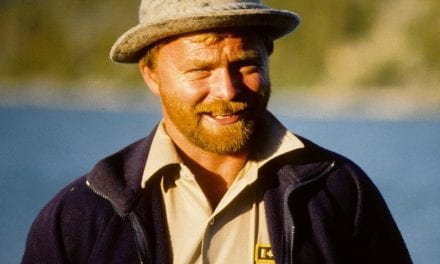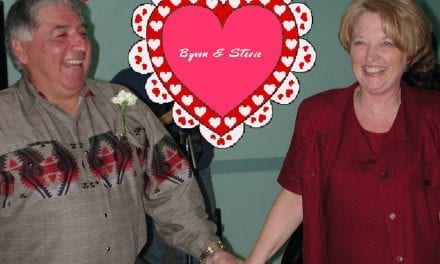Another Waterton story; while working at Waterton I had 2 jobs I never imagined I’d do as a Park Warden. One was collect ticks for research and the other, spray Round Up. Waterton had lots of ticks and a University somewhere was doing tick borne disease research and needed samples. Another Seasonal and I were assigned a weekly tick quota. We experimented lots with techniques and arrived at a winner. We’d tie several short ropes to our belts, each rope had long chunks of rags on the end. We learned that red rags were most successful. Then we’d walk across the slopes of the grasslands, dragging the rags. We’d find as many ticks on our legs and arms as we’d find on the rags. That was quite the assignment!
As a Park Warden I never imagined I’d be spraying Round Up in a National Park. Well, clusters of spotted knapweed were showing up in the Park, along the highway coming from the US border. Most knapweed patches were at viewpoints and picnic areas, likely from seeds that dropped off of vehicles. Parks didn’t want to be accused of spreading knapweed to the Alberta ranch and grasslands, so we inventoried and mapped areas of infestation… then we loaded up truck tanks and backpack sprayers. Not exactly what I’d imagined I’d be doing!
Another Waterton Enforcement story – It was the fall of 1979, hunting season was open in the adjacent Alberta foothills. The season was open for bull moose. I decided to patrol the boundary, so drove out of the Park, went north on Highway 6 towards Pincher Creek, then took a bumpy dirt road west, back into the Park where there was a Warden Cabin in a lovely meadow. Sorry, I can’t remember the name of the cabin and couldn’t figure it out from Google maps – perhaps Horseshoe Basin?. Close to the cabin was a very rough road along the Park Boundary that climbed a nearby steep shoulder which has amazing views over the marshes and meadows of the ranchland below. From my vantage point I could see 3 or so moose below. It was almost like watching a chess game from above. As a moose would browse, walking through the marsh, a truck would drive along a dirt track looking for an animal. It was fascinating seeing how the moose could be relatively close to the dirt track, yet hidden from the hunters’ view. In the late afternoon a truck came driving slowly along and at the same time a moose walked out from the cover; the truck quickly stopped, one of the 2 men shot and the moose fell; the truck backed up close to the animal and the 2 men winched the animal into the bed of the truck. I had been watching that moose for quite a while. With my binoculars I couldn’t see any antlers. When the men speedily winched the moose into the truck bed and drove away, I was convinced they had illegally shot a cow moose. I radioed the other Seasonal Warden who was working in town, explained what had happened, gave him a description of the truck and got him to drive to Highway 6 and drive north. My plan was to drive down the boundary track, across the ranchland to the highway and drive north. With luck one or the other of us would come across the truck. I got to the highway, put my truck lights and siren on and drove like a bat out of hell. Hey this was big crime! Eventually I caught up to the truck and they pulled over. Their eyes were wide – like “Who is this woman? Where did she come from?” I explained who I was and why I had stopped them; I got their drivers’ and hunting licenses, then went to the back of the truck and I couldn’t believe my eyes. It was a bull, with stubs barley larger than the animal’s ears. All good! Crime averted! The hunters lived on a ranch close by and decided it would be easier to gut the animal in their shed. That evening the local cattleman’s association had a barbeque and the 2 hunters went to it. Max and Julie Winkler also attended the event. The talk of the evening was all about his woman Park Warden who came out of nowhere and checked the local hunters. The next morning Max told me all about the talk at the BBQ. He was super pleased and proud! That was a job well done!
MH: How did the Warden Service change over the years? 3515:
JT: I left the Warden Service in November 1979, so I didn’t experience the upheaval that followed. It was devastating to hear the disruption and impact to so many throughout those changes.
MH: What about the Warden Service was important to you? 3540:
JT: During the time I worked for the Warden Service, the idea of preserving the Parks for future generations really resonated with me. I believed the work we did was extremely valuable and important and that future generations would benefit from our efforts. Over the course of my career, as my work continued with a focus on conservation, my thoughts evolved from the perspective of resource and natural area preservation for the use and enjoyment of future generations, to more of an appreciation of the intrinsic value of ecosystems, wildlife, and natural areas. I’m a conservationist at heart. The first rule of intelligent tinkering is to save all of the parts and that concept somehow dovetails with the question “What gives humans the right to destroy nature?” National Parks are important and valuable today and will be even more appreciated in the future.
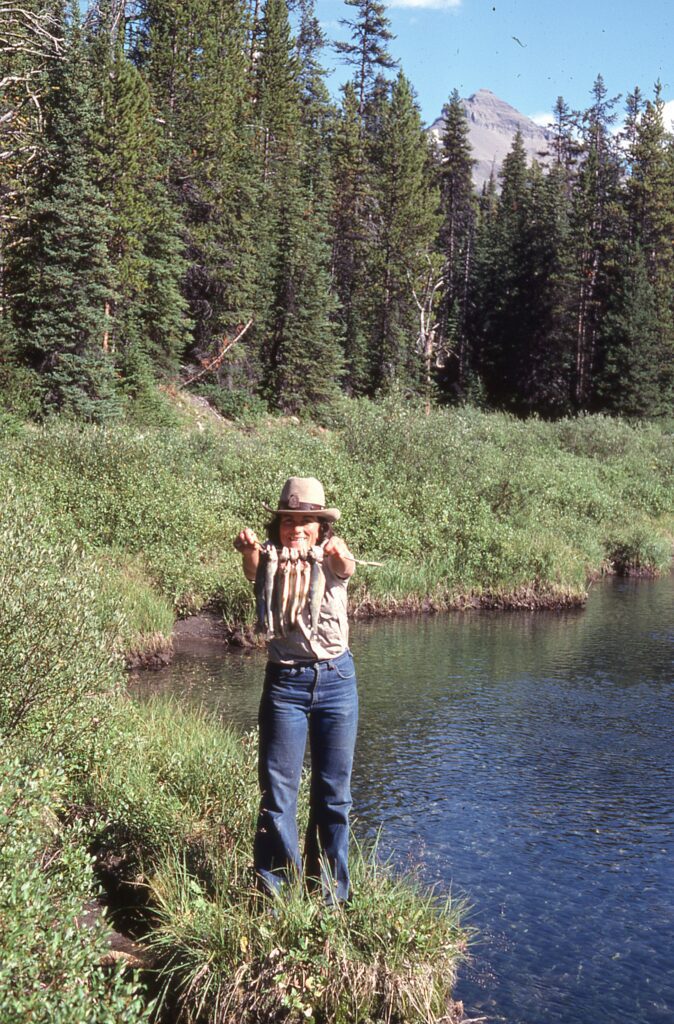
1977 Spray River Banff National Park
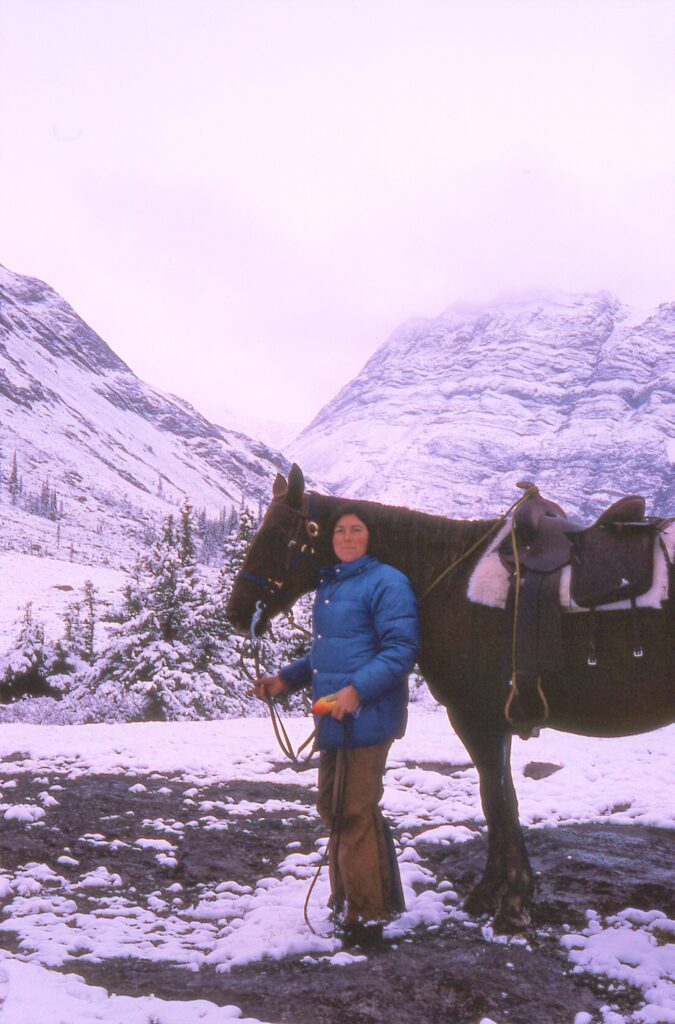
1977 Boundary Patrol, Panther River, BNP. Horse Wack
MH: Are there any legendary characters or stories associated with the Warden Service that you can share? 3655:
JT: Well, pretty much everyone who worked out of the Lake Louise Warden Office at that time has a Jim Rimmer story. Here’s one of my stories. After I’d been working as a dispatcher in the Lake Louise Office for a while Jim asked if I’d like to come to his trailer for dinner. I was kind of tempted because I knew he was such a character and had done all kinds of unique and interesting things all over the world, plus Jim was a great story teller. But as interesting a character as he was, I didn’t want to become personally involved with him. Over the years a couple of my friends who worked at the Post Hotel had accepted his dinner invitation. Stories of their evenings with Jim were very similar: Jim cooked and served a nice dinner and after dinner he would suggest a slide show. The slide show would start, then a slide of his frost bitten foot, with huge, swollen and black toes would flash up on the screen. He would make a fuss, like “How did that slide get there?”. The slide show would continue and several more slides of his toes getting blacker, then falling off would appear, and finally there would be a slide of his foot with no toes. After the slide show, Jim would try to put the moves on his date. Each time he asked me to go for dinner I found ways of deflecting. You know, in hindsight, I wish I’d had the gumption to accept his invitation!
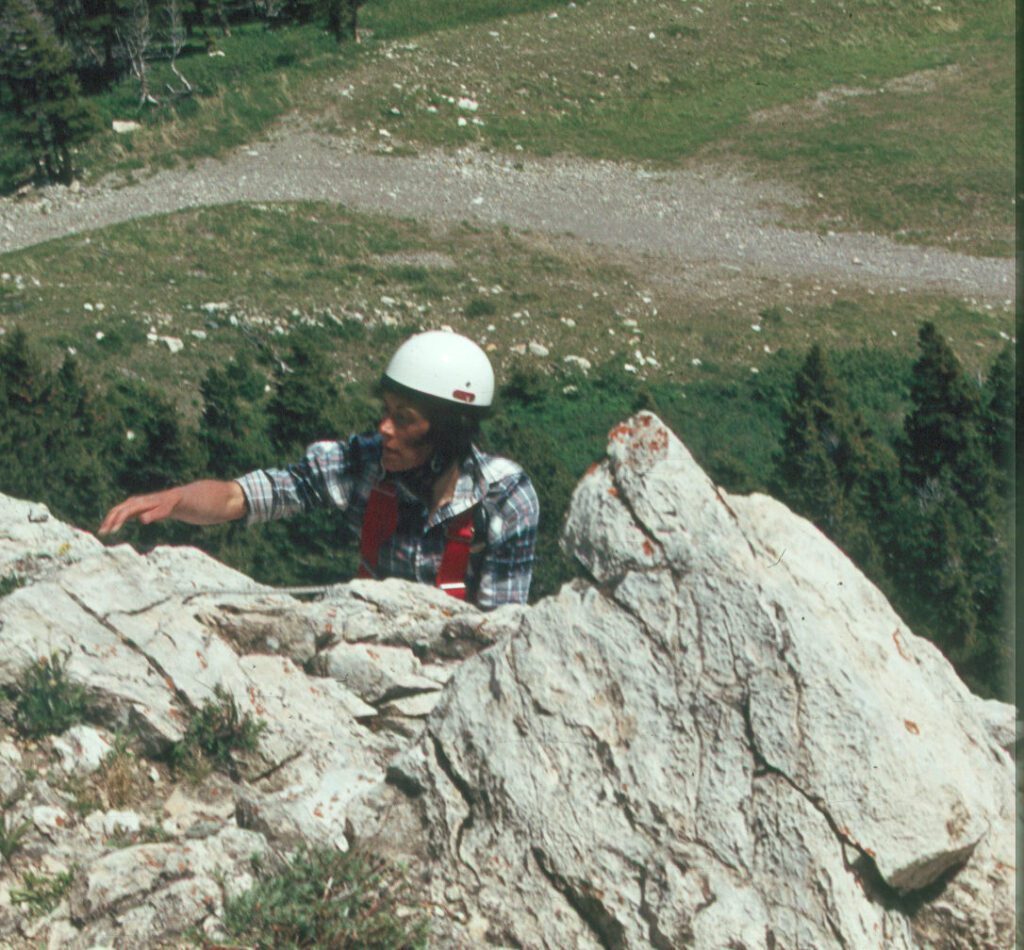
Judy Climbing
MH: Is there anyone from the Service that stands out in your mind? 3912:
JT: I am extremely grateful for the support Andy Anderson, Peter Whyte and Max Winkler gave me. All of them were extremely thoughtful and wise about how and where to integrate me into the Warden Service. I know Andy, Peter, Paul Kutzer and Mike McKnight carefully considered which Senior Park Wardens to assign me to when I was a Term and Seasonal Warden. Their choices were instrumental and gave me the best chance of succeeding. I am eternally grateful to Sid and Myrna Marty for supporting my dream to become a Warden.
MH: Is there anything about the Warden Service, as you knew it, that you would like future generations to know?
JT: Embrace diversity. I believe organizations are stronger and more resilient when they embrace diversity. One person’s strengths will most likely cover another’s weaknesses. Each person has a unique way of seeing the world and different ways of approaching and solving problems. When working with Sid Marty, he observed that I approached problems much differently than most men he’d worked with. He explained that men would often see a problem and just jump in whereas I would take the time to assess, think and develop a plan before jumping in. He believed this difference was because I didn’t have brawn to fall back on, if things didn’t work out well.
MH: What made the Warden Service such a unique organization? 4105:
JT: A lot of it has to do with the diverse work and the exceptional people. It was a combination of independence and yet teamwork. There was amazing camaraderie and I believe a shared profound appreciation for the Parks and its resources.
MH: Do you have any lasting memories as a Warden? 4145
JT: Some of my favorite areas were Skoki, Castleguard Meadows, Lake O’Hara. My favourite cabin is Cyclone. Pack horse that I remember was Buddy. He was good natured and a willing worker and he was on the short side which made it easier for me to pack! Some of those long legged horses were extremely challenging for me to pack! And the saddle horse I remember was Evan. He was surefooted and absolutely solid. As far as a trail, during hunting season Sid Marty and I did a boundary patrol up Tyrell Creek and there was a skiff of snow on the ground, the elk were bugling, and there was a large harem of cows. It was absolutely amazing!
MH: Do you ever miss being a Warden?
JT: It was with an extremely heavy heart that I left the Warden Service. Being a Park Warden had been my dream. Occasionally I wonder what my life and career would have been like had I stayed.
MH: Do you have any photos of yourself as a warden that you would like to donate? Artifacts? 4330:
Jt: slides…I’ll get them switched to photos.
MH: What year did you retire? What did you do in your other careers? What do you enjoy doing in retirement?
JT: I left the Warden Service in November 1979, so I wasn’t nearly ready for retirement! We left the Warden Service to go to Haye River NWT and for the 2 years we lived in the NWT, In the summers I worked for the Northern Affairs Program, which is the federal forest service, mainly on forest fires; I worked as the dispatcher, the accounts person, warehouseman, smoke patroller. I did fire mapping and hot spot detection. In the winters I worked for the Territorial Highways Department conducting financial audits. When we left the NWT, we moved to the Fraser Valley where I got a job working for the Provincial Ministry of Environment, Fish & Wildlife Branch. Initially I was a field biologist in the Sechelt, Powell River district, mainly reviewing logging proposals with the goal to minimize impacts on fish and wildlife habitats and populations. I have to say my years of living and working in the National Parks in no way prepared me for the scope and level of devastation I saw and experienced with coastal logging practices. I then became the field biologist in the Fraser Valley district – again my main duties were associated with proposed logging, but in addition, all types of land development – subdivision development, pipeline and highway construction. Fish habitat protection and mitigation on the Coquihalla Highway design and construction was one of my major projects.
I successfully competed for a Forest Ecosystem Specialist position, still with the Fish & Wildlife Branch in Duncan on Vancouver Island. I was involved in the development of the BC Forest Practices Code Legislation and its training modules and I presented training sessions about the legislation to the forest industry across the province. A few years later I became a Senior Biologist, then head of the Ecosystem section for Vancouver Island. I was the first female in the province in both positions. I retired from the BC Government in 2009, after 28 years of service.

